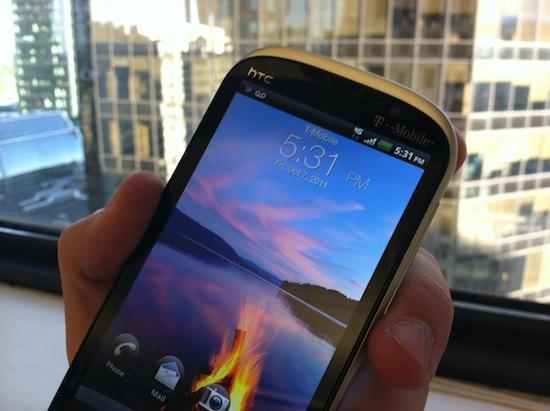
Mobile display technology has come leaps and bounds over the last four years. Starting with the original iPhone, the finger-friendly capacitive touchscreen was introduced, which answered the woes of unwieldy styluses (styli?) and resistive touchscreens. Instead of pecking at a small, inaccurate touchscreen with a tiny, plastic-tipped stylus, users could easily type with the pads of their index finger or thumbs.
Since then, displays have received more attention than any other part of the phone. After all, this is now the main form of input and what users will be staring at 99 percent of the time they're using the device. This is easily the most important part of the phone, and making sure it is flawless is absolutely vital.
The first of the improvements in mobile displays came in the form of color reproduction, brightness, clarity and power consumption. Some of the first modern mobile display technologies to pop up were OLED, AMOLED, TFT and LCD. Samsung has since perfected the AMOLED, and introduced some of the most vibrant and beautiful displays to date with their popular Super AMOLED Plus; LG has introduced their own NOVA display, which is supposedly brighter than any other mobile display; and Apple introduced the famed Retina Display, a LED backlit LCD, on the iPhone 4, which offers some of the most accurate and realistic color reproduction and highest resolution of any mobile display. All of these displays are impressive feats, to say the least.
Innovation didn't stop there, however. The most recent changes we've witnessed have been in the form of size and resolution. Seeing as OEMs have started dropping physical keyboards in favor of large, touchscreen displays, Android and Windows Phone manufacturers have introduced giant 4.3-inch (and greater) displays. Unfortunately, this was not originally followed by an increase in resolution. Instead, manufacturers kept the same WVGA (800 by 480 pixels) resolution that was used in many 3.7-inch displays, resulting in a low ppi rating and unsightly graininess. Thankfully, the iPhone 4's Retina Display, rated at 326ppi, sparked yet another arms race for higher ppi ratings.
Manufacturers have recently started churning out phones with qHD (960 by 540 pixels) displays, and next generation phones are reported to have 720p HD displays. The Galaxy Note already has a 720p Super AMOLED HD display, but at 5.3-inches, I would expect no less. The upcoming Galaxy Nexus (or Nexus Prime), however, is also supposed to sport this Super AMOLED HD display in a much more respectable 4.65-inch form. This would put the pixels per inch rating at roughly 320 – right under that of Apple's Retina Display.
The term "Retina Display" was a marketing term backed by Apple's claim that their 326 ppi rating was beyond the viewing capabilities of the human eye. Whether that can be backed up is left to question; but the important part is that I cannot look at my iPhone's display and see individual pixels. Likewise, a 720p display on anything 4.65-inches and under is going to yield much of the same.
I'm no display expert, but I know enough to confidently say that anything over 720p on a smartphone would be over the top and essentially useless, other than becoming more resource-intensive and requiring more processing power to push unnecessary pixels.
So what will we see next? What will happen after Samsung releases a phone with a Super AMOLED Plus HD display? Will display technology plateau?
My guess (and hope) is that OEMs will begin to explore new form factors. Samsung debunked any rumors that the flexible AMOLED phone was not real (not that we ever thought it was), but it would be nice to see these beautiful displays used in more versatile ways. Unfortunately, I'm also convinced that OEMs will not stop at 720 displays. I'm sure they'll press on since everyone, including myself, has been swept up into this specifications arms race.
What say you, pups? Is mobile display technology about to hit its ceiling? Would you like to see a 1080p display, despite it being virtually useless? What about new form factors? Flexible or multiple displays?
- Log in to post comments

